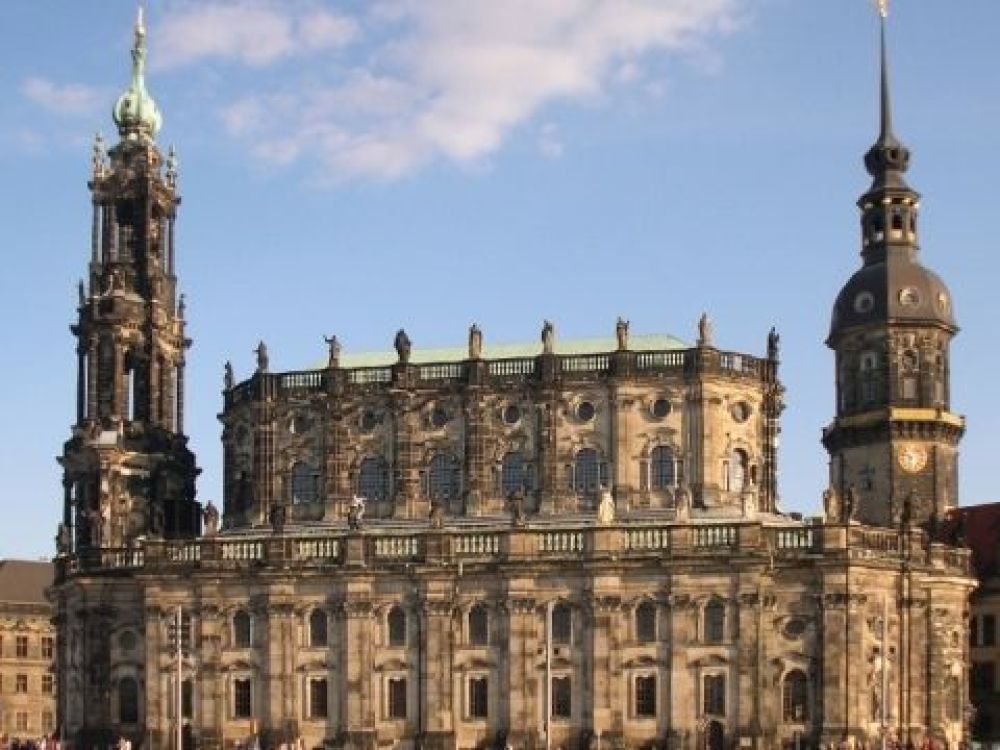

The Katholische Hofkirche, also known as the Dresden Cathedral or the Cathedral of the Holy Trinity, stands as a monumental piece of Baroque architecture in the heart of Dresden. With its high impact on the skyline and its historical significance, the Hofkirche has played a pivotal role in Dresden's cultural and religious landscape since its consecration.
Constructed under the reign of Augustus III, who was the Elector of Saxony and king of Poland, the Hofkirche was built as a Catholic church in a predominantly Protestant city. The foundation stone was laid in 1738, and the church was designed by the renowned Italian architect Gaetano Chiaveri. After a construction period marked by numerous challenges, the church was consecrated in 1751, just a few months after the passing of Augustus III.
The Katholische Hofkirche has been a significant tourist destination for years, drawing visitors from all over the world interested in its architectural grandeur, art, and its vital role in Dresden's history. The church's interior is rich in religious artifacts and works of art, including the heart of Augustus the Strong, which is entombed in the church, and the remarkable Silbermann organ, played by famous composers such as Johann Sebastian Bach.
World War II and Reconstruction: The cathedral suffered severe damage during the Allied bombings of Dresden in 1945. It became a focal point in the DDR (East Germany) for restoring national pride and heritage, leading to extensive reconstruction efforts. The meticulous rebuilding of the Hofkirche took decades, with the final works completed in the 1980s. The church's resurrection from ruins symbolized Dresden's phoenix-like rise from the ashes of war. As a result, tourism flourished with the cathedral being a testament to the city's resolve and commitment to preserving its history.
Visiting Today: Modern-day visitors can witness services, attend concerts, and view the significant artistic and architectural elements of the cathedral, making it a living part of Dresden's cultural activities. The inclusion of the Hofkirche in the Dresden Elbe Valley UNESCO World Heritage Site (although the status was revoked in 2009 due to the construction of the Waldschlösschen Bridge) had further cemented its place as a historical monument of interest to international tourists.
Recently, there has been an emphasis on incorporating technological advancements into the tourist experience. Virtual and augmented reality tools are being used to illustrate the cathedral's destruction and subsequent reconstruction. Additionally, the rising trend in thematic tourism has led to specialized guided tours focusing on the church's Baroque architecture, musical history, and its spiritual relevance.
Dresden's commitment to sustainable tourism also impacts visits to the Hofkirche, guiding the preservation of the church and its surroundings and underscoring the importance of cultural and historical education.
The Katholische Hofkirche remains a powerful symbol of Dresden's rich past and vibrant cultural scene. As tourism strategies evolve, the cathedral is expected to continue adapting, illustrating the enduring nature of this historical edifice in Germany's storied landscape.